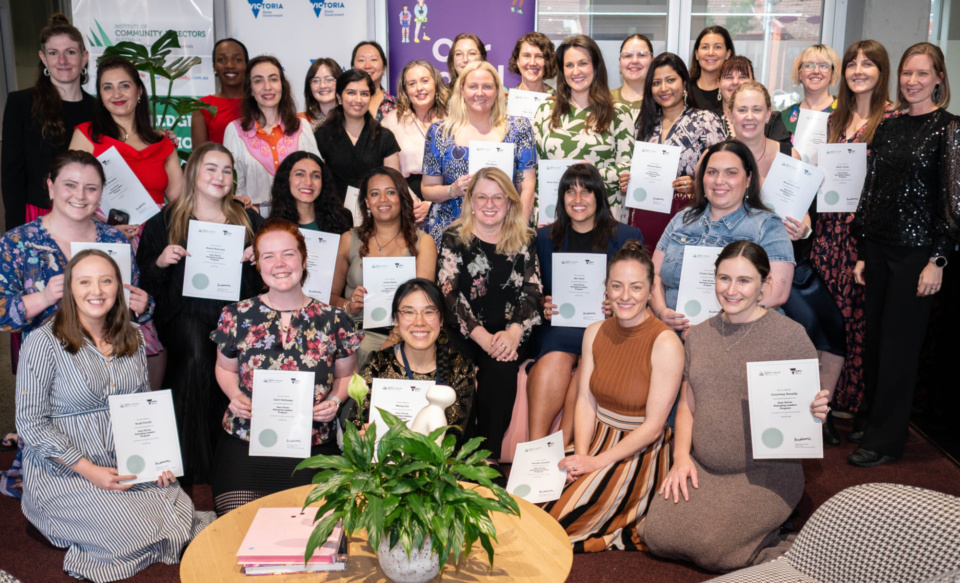
Burnout costing billions in the NFP sector
Posted on 11 Dec 2025
Community Directors trainer Jon Staley knows from first-hand experience the cost of ignoring…
Posted on 17 Jul 2025
By Justin Hogg, RightSource

Not-for-profit mergers are frequently discussed, yet relatively rare. Finding a merger partner and merging successfully is not about finding the right price: it’s about finding alignment.
Creating this alignment through clear governance of the merger process can increase the chance of success, though it doesn’t guarantee it. I discuss this in more detail in the accompanying video. Key aspects of this governance process include:
"When the stars align and two organisations come together to become more than they were apart, the process can be transformative."
The first question organisations should be asking is “What is it that we are trying to achieve and does it align with our purpose?’” The answer is the guiding star for the whole process.
Plan how the agreed goal is to be achieved. This will include setting aside a budget for the time and resources required.
A merger process in the NFP sector is less about acquiring and more about being attractive to potential partners. This can mean allocating time for a brand refresh, or making the hard decisions needed to bring an organisation to viability. Once a potential partner is interested, it is important to invest the time in getting to know each other – the foundation for due diligence.
The final piece is the alignment of people. Staff, stakeholders and members all form part of the process. It starts with assessing the alignment of a potential partner’s culture, and it ends with the most significant task in any merger: integrating the two organisations.
There’s a lot of discussion about whether we need to consolidate the not-for-profit sector, to reduce the number of charities and not-for-profits. Personally, I don’t agree with the idea that consolidation is necessary.
However, an opportunity for a merger or acquisition is worth considering. And unlike in the for-profit world, it’s not simply a matter of writing a cheque. There’s a certain complexity and even a bit of magic to it.
I’ve worked with several organisations, and while I can’t name names, here are some real-life examples of mergers that have worked, and why.
Regional organisations operating in the aged care or National Disability Insurance Scheme (NDIS) sectors – often both – face increasing pressure to meet high levels of compliance, address staffing challenges, and manage limited funding.
One regional organisation, looking to meet these challenges and maintain its purpose, set a clear goal of finding a larger partner to merge with, aiming to preserve its mission locally. By defining its goals, allocating funds, and developing a strategy, it identified several potential candidates and followed a structured assessment process.
In the end, it formed a collaboration, not a legal merger, which still met its objective of securing the organisation’s future.
Federated models often appear well-suited to mergers. I have seen several proposed that did not proceed – but some that did.
So, what made the difference? In my view, the merger goal-setting process has to clearly define how the new entity will serve the purpose of all the organisations involved. Federated models often include entities with slightly different purposes or strategies. The initial focus must be on whether these can be aligned.
If alignment is possible, the chances of a successful merger increase. If not, a merger is unlikely to be the right path.
Where two organisations are essentially providing the same service in different locations, and the result is simply “one plus one equals two”, there may be no clear benefit to a merger – even if their purposes are aligned.
They might continue operating separately and achieve the same outcome. There needs to be a deeper advantage to merging, as economies of scale are not always material. In these cases, boards often conclude that there is no clear case that a merger would be in their organisation’s best interests.
When the stars align and two organisations come together to become more than they were apart, the process can be transformative. With sound governance, you give a merger a greater chance of success, and you get clarity on when it is not the right decision.
Justin Hogg is the managing director of RightSource, a consultancy supporting not-for-profits with services including governance advice, secretarial support, accounting, coaching and board facilitation.

Posted on 11 Dec 2025
Community Directors trainer Jon Staley knows from first-hand experience the cost of ignoring…

Posted on 10 Dec 2025
As a qualified yoga instructor who learned the practice in her hometown of Mumbai, Ruhee Meghani…

Posted on 10 Dec 2025
Anyone working in an organisation knows it: meetings follow one after another at a frantic pace. On…

Posted on 10 Dec 2025
Stressed, overwhelmed, exhausted… if you’re on a not-for-profit board and these words sound…

Posted on 10 Dec 2025
The Institute of Community Directors Australia trains over 22,000 people each year, which gives us…

Posted on 03 Dec 2025
Many not-for-profit (NFP) board members in Australia are burnt out, overwhelmed and considering…

Posted on 26 Nov 2025
A roll call of Victoria’s brightest future leaders has graduated from a testing and inspiring…

Posted on 12 Nov 2025
At the Institute of Community Directors Australia, we believe that stronger communities make a…

Posted on 12 Nov 2025
Like many Community Directors members, Hazel Westbury is a community leader who isn’t easily…

Posted on 11 Nov 2025
I’ve seen what happens when fear of conflict wins out over taking a principled stand.

Posted on 11 Nov 2025
‘It’s not a question of enough, pal. It’s a zero-sum game. Somebody wins and somebody loses’.

Posted on 11 Nov 2025
Progressive economic Richard Denniss believes the constant hunt by governments for the political…